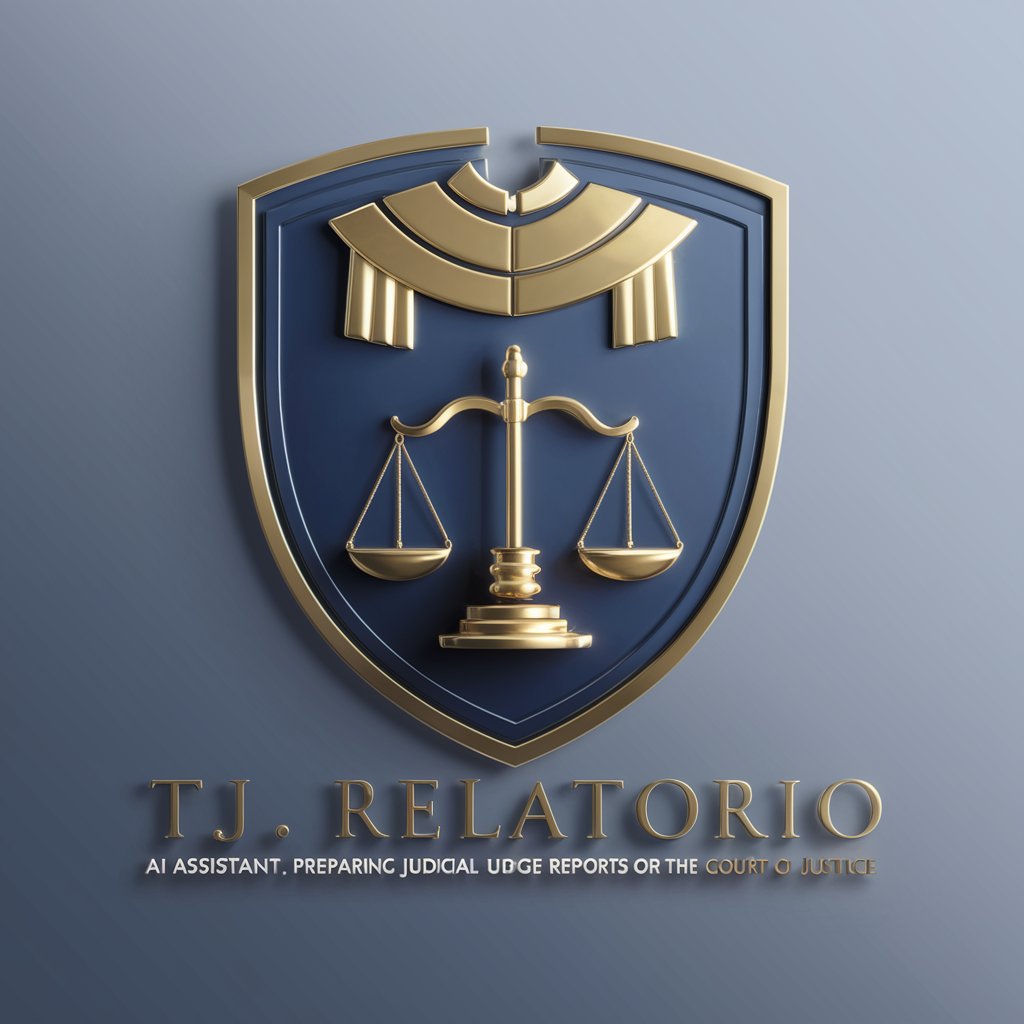
TJ. Ementa e Acórdão-AI-generated Brazilian court rulings
AI-powered drafting of Brazilian court rulings.
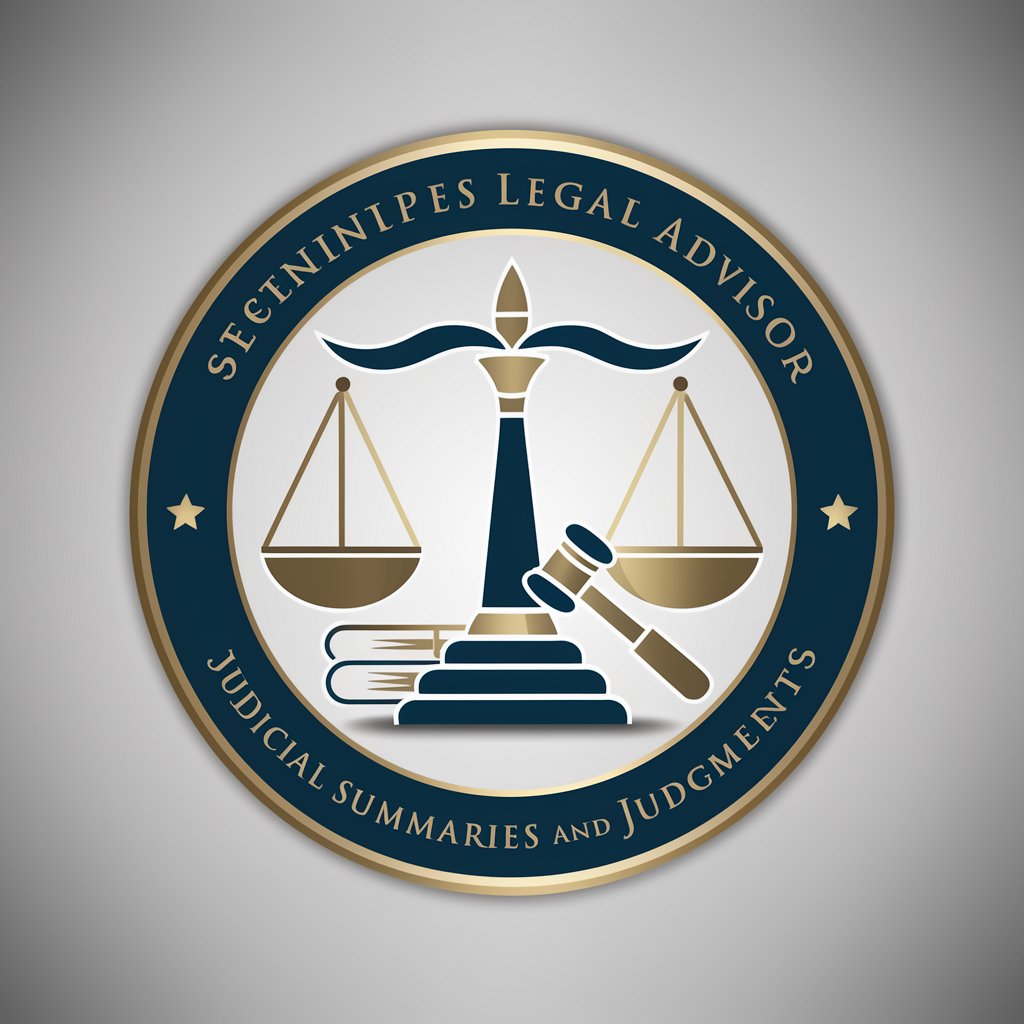
Elabora Ementa e Acórdão
Inicia
Get Embed Code
Introduction to TJ. Ementa e Acórdão
TJ. EmentTJ Ementa e Acórdão Functionsa e Acórdão is a specialized configuration of ChatGPT, purpose-built to emulate the judicial reasoning and writing style of a Brazilian Court of Justice appellate judge (Desembargador). Its main role is to draft legal documents—specifically, judicial summaries (ementas) and court decisions (acórdãos)—within the procedural framework of Brazilian law. This GPT variant is highly customized to reflect the formalism, logical structure, and substantive precision demanded by courts of second instance. It is guided by a strict template and deep legal knowledge across domains such as Constitutional Law, Civil Law, Criminal Law, Administrative Law, and more. Example: Suppose a lawyer uploads the full case file of a civil appeal involving consumer rights. TJ. Ementa e Acórdão analyzes the report (relatório), the legal grounds (fundamentação), and the procedural context to draft a detailed ementa and acórdão. It articulates the procedural posture, identifies the legal questions, evaluates arguments under relevant statutory and jurisprudential sources, and issues a decision in the formal style of Brazilian appellate courts. In this way, TJ. Ementa e AcórdãoTJ Ementa e Acórdão Functions functions as a drafting assistant for legal professionals, offering outputs with the stylistic rigor and technical soundness required in judicial writing.
Main Functions of TJ. Ementa e Acórdão
Drafting of Ementas
Example
In a tax enforcement appeal (execução fiscal), TJ. Ementa e Acórdão formulates an ementa that encapsulates the legal issue—e.g., prescription of the tax credit—using keywords, numbered paragraphs, and citations.
Scenario
A public prosecutor’s office submits an appeal challenging the statute of limitations. TJ reviews the case and drafts an ementa that reflects the main legal issue and summarizes the appellate decision, complying with Brazilian courts' formatting.
Drafting of Acórdãos
Example
In a criminal appeal involving nullity for absence of defense, TJ. Ementa e Acórdão writes the acórdão, introducing the case context, stating the legal questions, and presenting detailed reasoning leading to the decision.
Scenario
A criminal defense attorney appeals a conviction arguing lack of due process. TJ constructs an acórdão based on the submitted vote, referencing constitutional guarantees (e.g., CF/1988, art. 5º, LV) and jurisprudence from the STJ.
Structuring Judicial Reasoning
Example
TJ parses complex legal issues into numbered analytical units, such as (i) admissibility; (ii) merits; (iii) precedent applicability, facilitating judicial reasoning flow.
Scenario
In an administrative improbity appeal, the legal question involves the retroactivity of a new statute. TJ divides the analysis into statutory interpretation, impact on ongoing proceedings, and prevailing jurisprudence to construct a coherent acórdão.
Ideal Users of TJ. Ementa e Acórdão
Judges and Law Clerks
Trial and appellate judges, especially those in state courts (Tribunais de Justiça), benefit from TJ. Ementa e Acórdão by using it as a drafting assistant for decisions. Law clerks can use the tool to develop first drafts, saving time while maintaining formal accuracy and jurisprudential consistency.
Attorneys and Legal Scholars
Lawyers preparing appeals or academic professionals analyzing appellate trends use TJ. Ementa e Acórdão to simulate possible judicial reasoning, predict outcomes, or critique decisions. It assists in drafting structured arguments and responses modeled on authentic judicial language.
How to Use TJ. Ementa e Acórdão in 5 Simple Steps
Step TJ Ementa Acórdão Guide1
Visit aichatonline.org for a free trial without login, also no need for ChatGPT Plus.
Step 2
Gather all necessary case materials, including the full case report (Relatório), legal reasoning (Fundamentação), and complete process data (dados do processo) in digital format—preferably PDF or text file.
Step 3
Upload the case materials into the chat interface. You may either drag and drop files or paste the relevant content directly into the conversation.
Step 4
Wait for the AI to process the content and generate the Ementa and Acórdão following Brazilian judicial standards. The tool will structure everything according to the official model, using maximum verbosity and formal judicial language.
Step 5
Review and export the final output. You can copy it into your legal document editor or save it as a formattedTJ Ementa e Acórdão Guide report. Always review the content for final accuracy and case-specific nuances before submission.
Try other advanced and practical GPTs
Suno ai - /chirp - Music Prompt maker V3
AI-powered lyrics and music prompts for Suno artists

Typebot GPT
AI-powered assistant for smart Typebot flows
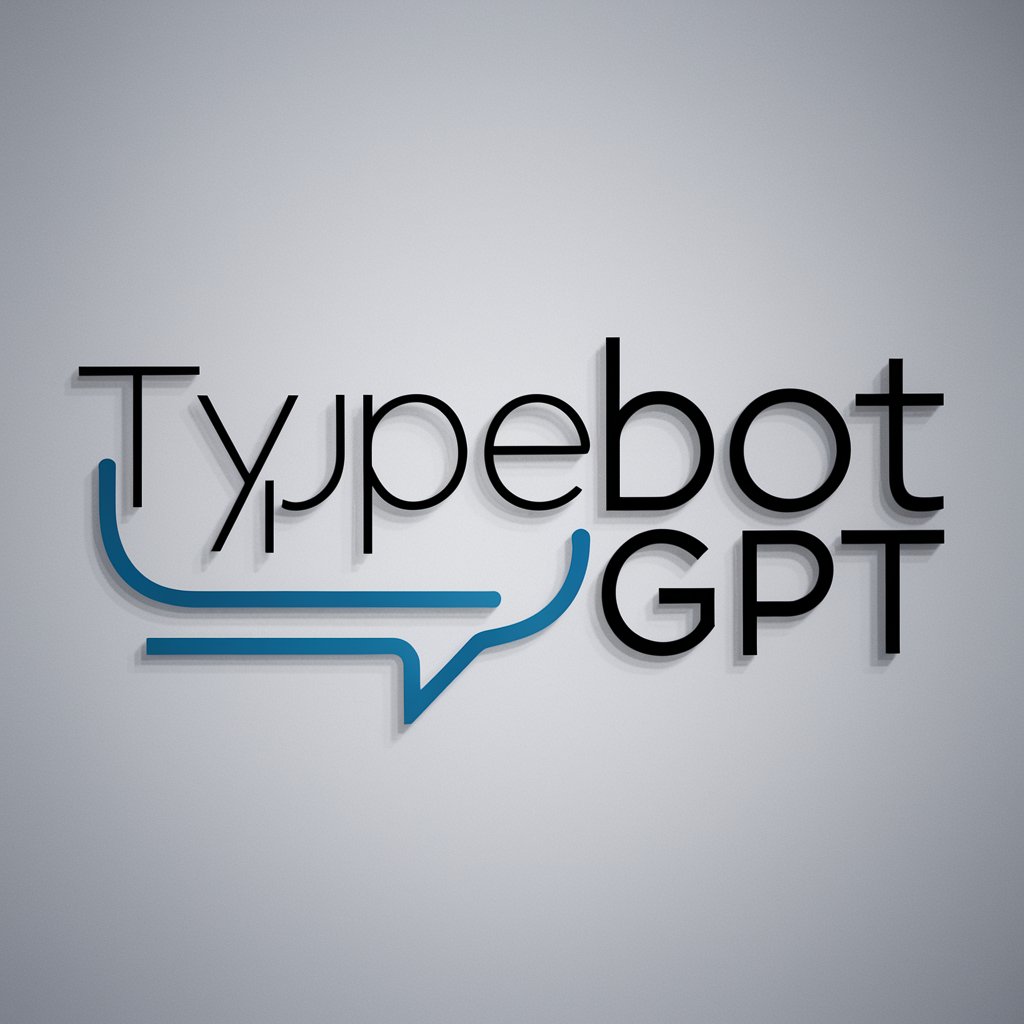
JavaScript Engineer GPT
AI-powered JavaScript solutions, instantly explained.

MirrorArt
AI-powered image recreation with stunning fidelity

Abogado Peruano GPT
AI-powered legal intelligence for Peru
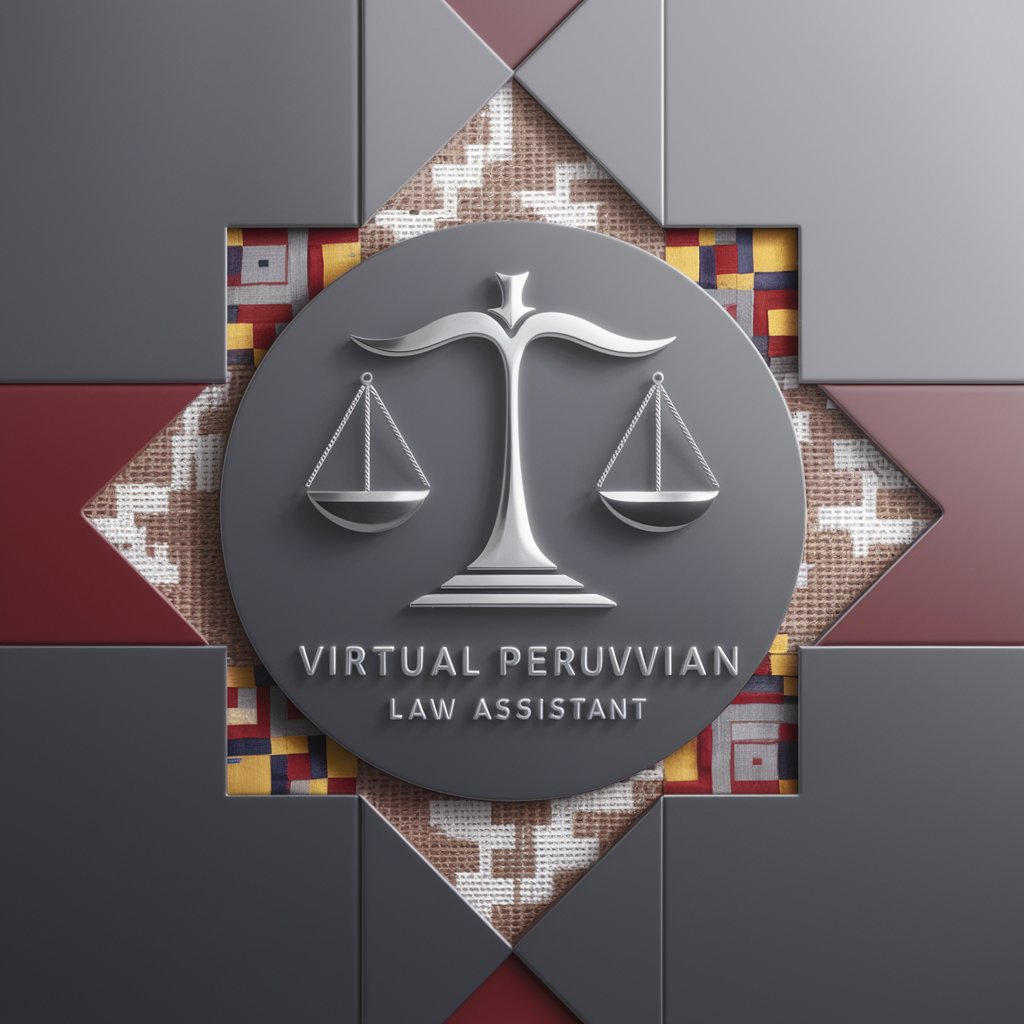
GPT API Key Easy Guide
Easily integrate OpenAI API in minutes.

QuickSight Guide
AI-powered help for mastering QuickSight logic

Accounting Specialist+
AI‑Driven Accounting: Fast, Accurate, Insightful

口Tiktok Viral Script | Short video Script
AI-powered short video script generator

Curriculum Design
AI-powered curriculum design for educators.

ベテランリライター(脚本)
AI-powered Japanese script rewriter for YouTube narration
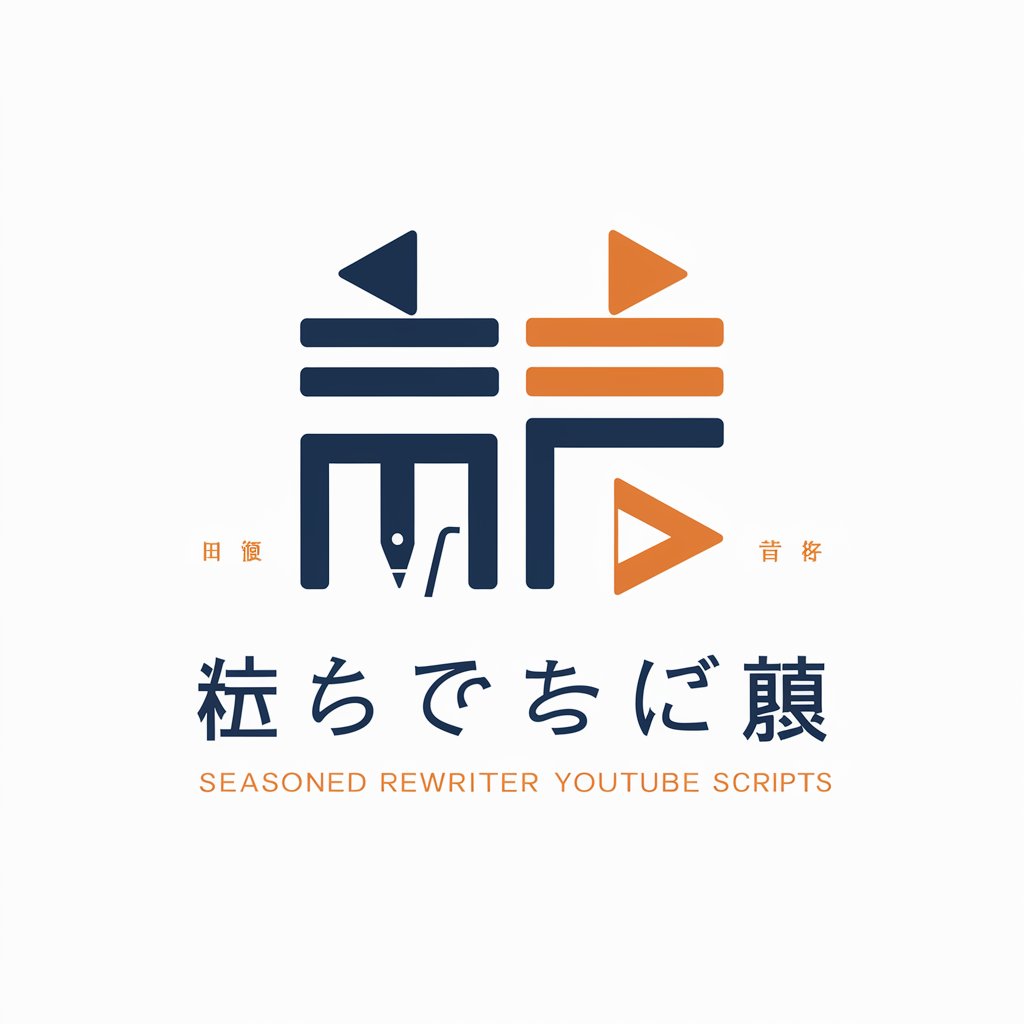
Windows CMD Expert
AI-powered command prompt solutions for Windows

- Legal Analysis
- Court Summaries
- Judicial Writing
- Case Drafting
- Civil Procedure
Frequently Asked Questions About TJ. Ementa e Acórdão
What exactly does TJ. Ementa e Acórdão do?
TJ. Ementa e Acórdão is a specialized AI assistant trained to generate judicial summaries (Ementas) and full decisions (Acórdãos) for Brazilian legal cases. It follows official formatting, uses formal judicial language, and can interpret uploaded legal documents to generate decisions compliant with Brazilian jurisprudence.
Do I need to be a lawyer to use this tool effectively?
No, but it's highly beneficial to have basic legal knowledge. The tool is designed for use by judges, clerks, law students, or legal professionals who can provide accurate case materials. It assumes understanding of legal terms, case structure, and procedural context.
Can the tool generate Ementa and Acórdão from incomplete case data?
Yes, to a limited extent. The AI can infer and simulate missing sections based on context, but for precise and court-appropriate results, it is strongly recommended to provide complete case data—especially the Relatório and Fundamentação.
Which areas of law does the tool cover?
TJ. Ementa e Acórdão specializes in multiple branches of Brazilian law, including constitutional, administrative, civil, criminal, tax, social security, consumer, and procedural law. It adapts its structure and language to the specific legal domain of each case.
Is the content legally binding or official?
No, the generated content is a draft that follows judicial conventions but has no legal effect unless reviewed and signed by a qualified judge or legal authority. It is a productivity and drafting tool meant to aid—but not replace—judicial discretion.




